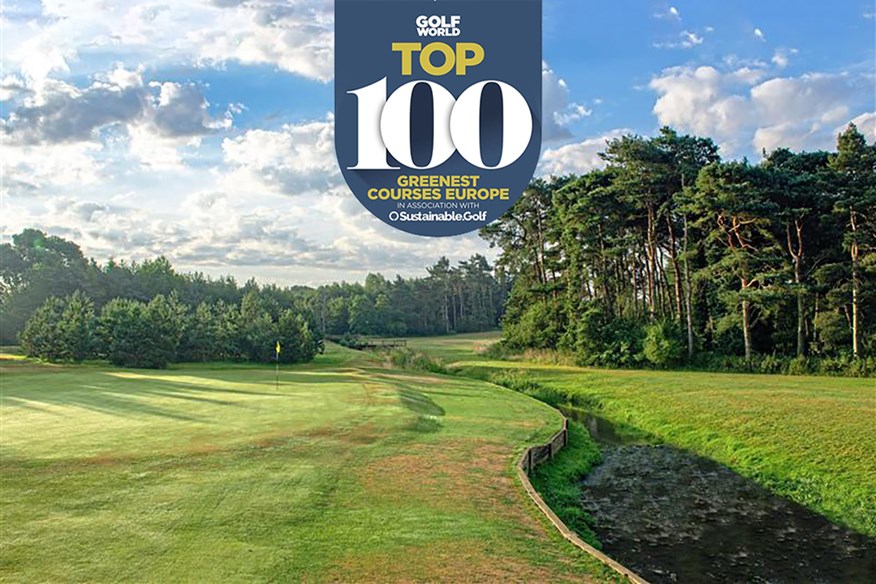Golf World Top 100: Best Sustainable Golf Courses in Europe
Last updated:
We highlight the most ‘green’ golf courses in Europe, doing their bit for the environment and sustainability.
JUMP TO: How & why we created the Green 100 | Best Sustainable Golf Courses: Climate Action | Best Sustainable Golf Courses: Fostering Nature | Best Sustainable Courses: Conserving Resources | Best Sustainable Golf Courses: Strengthening Communities
I felt an even bigger sense of pride than usual as we compiled this Top 100 ranking. This ranking feels a good deal more important than identifying the finest courses in a certain area – and regular readers will know how seriously I take that task.
This ‘Green’ Top 100 has wider implications than ‘just’ (hopefully) helping our readers make informed choices when they are pondering their next golf break.
Climate change is, in my opinion, a very real danger to not just future generations, but ours too. Therefore, it seems not just responsible and sensible that we all play our part in reducing its threat as much as we can, but actually pretty obvious. The damage may be irreparable in some respects and the world’s awareness may be 30-plus years too late, but that doesn’t mean we shouldn’t try now. Those are my personal views and are part of the reason I wanted to create this Top 100 of the most ‘green’ golf courses in Europe.
Another factor was my feeling that while golf has its faults – and certainly has had even more in the past – it is often unfairly demonized in terms of the environment and sustainability.
As this ranking demonstrates, there is so much valuable and impressive work going on throughout Europe in this regard. The industry can do more, and a much larger number of clubs can do better, but I think golf deserves a more positive perception.
I hope this ranking receives a bit of publicity inside and especially outside the game. I want it to demonstrate that golf is a sport with an ecological conscience, and that there are hundreds of ingenious ways clubs are making a difference.
I hope it encourages the 100 clubs who have been recognized by us for their efforts to do even more in this direction. I hope it motivates clubs who have already made some strides in these aspects to do even more. I also hope that it inspires clubs who have never done anything ‘green’ to leap into action.
I certainly could not have produced what you are about to read by myself. While I am usually assisted by a panel of exceptionally well-traveled golfers, this time it was the GEO Foundation. Based in North Berwick, their aim is simply to help accelerate sustainability in golf, principally through fostering nature, taking climate action, conserving resources and strengthening communities – the four sections the 100 clubs who have made this list are divided up into.
GEO have been a wonderful partner in this and I can’t thank them sincerely enough. I hope they are pleased with the final product and that it plays a part in helping GEO become even more successful in their aims.
I also hope this becomes a regular Top 100 and that clubs all over Europe, or even the World, view it as the most desirable list to be in. Being recognized as a World Top 100 course or a GB&I Top 100 course is clearly a huge honor. Being recognized as a World Top 100 or a GB&I Top 100 ‘Green’ club? I think that is even more impressive.
I was educated so much while putting this section together and I’m sure you will learn things too while reading it, as well as perhaps being a little inspired about sustainability and golf’s role in it.
Perhaps more than ever, I’d welcome your feedback on everything to do with this Top 100. You’ll find contact details at the bottom of the page.
Chris Bertram, Top 100 Editor
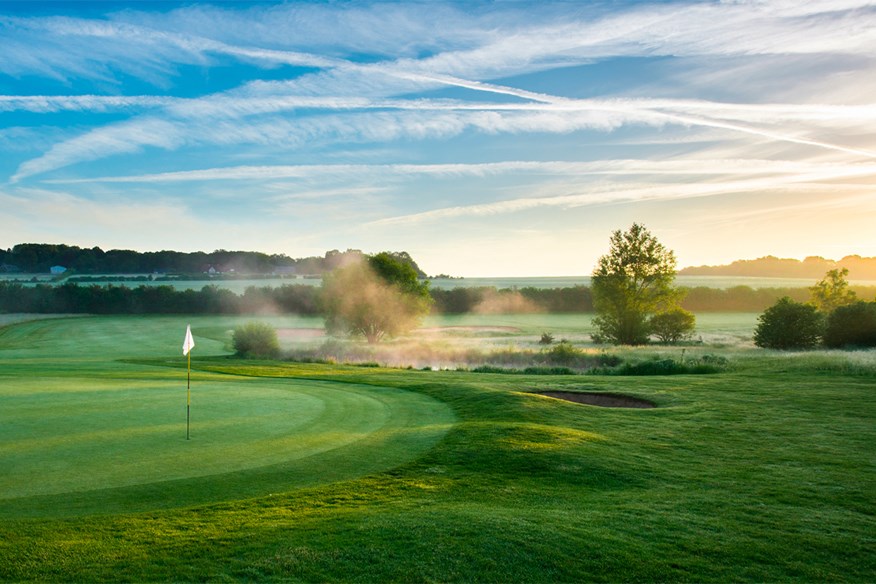
Why we created the ‘Green 100’
The Green 100 provides an important opportunity to promote some of Europe’s most environmentally conscious and socially responsible golf courses, and some of their most impressive achievements. These are success stories that as golfers we should all be proud of.
We profile clubs that are working to deliver fantastic golf while also: caring for their local landscapes and biodiversity; conserving water, energy and materials; actively strengthening their communities; and taking action to reduce adverse climate impacts.
By celebrating their leadership across these important themes, we can contribute to:
1. Raising golfer awareness about how sustainability issues are affecting the game.
2. Stimulating pride in how golf is stepping up to play its part.
3. Sharing ideas, guiding and inspiring other clubs around the world to take more action.
4. Giving golfers food for thought as you think about what actions you can take as individuals, within your family and friends, and in business circles.
If the Green 100 achieves some of these outcomes in some way across the golf world, we will have helped to make our game an even greener, more sustainable and more popular sport. All of that is vital for the future of the game, as well as for the other people and wildlife that share this one planet.
How we created the ‘Green 100’
This collection of European courses has been assembled by TG in association with GEO Foundation for Sustainable Golf.
While it is near impossible to represent every single club that is active in sustainability (there are many more out across the world), we believe this is a good representation of clubs that are credibly committed and visibly active in the sustainable golf community.
Many of these courses are adopting a comprehensive approach, drilling deep into best practices and special projects, sharing information publicly and carefully measuring their impacts on the environment, climate and communities.
We wanted to make sure that we celebrated and represented courses that are excelling across the key Sustainable Golf themes: Fostering Nature; Conserving Resources; Climate Action; and Strengthening Communities.
Twenty-five courses have been included for each theme to demonstrate the range of work being carried out across many courses in Europe and beyond. This means that The Green 100 are all equally valued in making a difference and showcasing golf’s value.
The decision process
Step 1: We looked at each course’s history of working in sustainability and looked at the set of highlights entered by the course staff into the OnCourse platform.
Step 2: We then pooled all the courses that were either GEO Certified and/or had created highlights of their sustainability achievements, alongside those courses that were just starting out on their sustainability journey.
Step 3: The initial pools were then assessed for the number of highlights created and which area they focused on – such as Nature, Resources, Community or Climate. This highlighted the most active clubs and those we could confidently say are among the most sustainable clubs in Europe actively demonstrating their efforts.
Step 4: Given that sustainability is not achieved by individuals, we ensured that our listing looked at venues as a whole and not just the individual golf courses. For example, the courses under The Links Trust at St Andrews were consolidated into a single entry.
Step 5: The next step was determining who would best fit into which of our four categories – Nature, Resource, Community, and Climate. This depended on the quality and number of the highlights provided in any given category.
Best Sustainable Golf Courses in Europe: Climate Action
As climate change and its impacts have become more prevalent, action is accelerating in an effort to turn the tide. The courses mentioned in this section have been recognized for their efforts in taking action on climate change.
AUCHTERARDER
PERTHSHIRE, SCOTLAND
Auchterarder have spent time turning an area of poor drainage into a biodiversity-rich wetland/low pond. This water feature and the native flora within and around it now act as an efficient and effective carbon sink.
ABBEY HILL GOLF CENTRE
MILTON KEYNES, ENGLAND
Abbey Hill have updated the lighting in their workshop with LED lights as well as movement sensors and timers. This means lights only turn on when someone enters a room and turn off after a set time, saving on electricity, energy and costs.
BEACONSFIELD
SLOUGH, ENGLAND
Beaconsfield Golf Club are taking significant steps to increase the club’s carbon sequestration ability. By regenerating an area of the club through a re-wilding project, they will increase their carbon sequestration rate and reduce net carbon emissions.
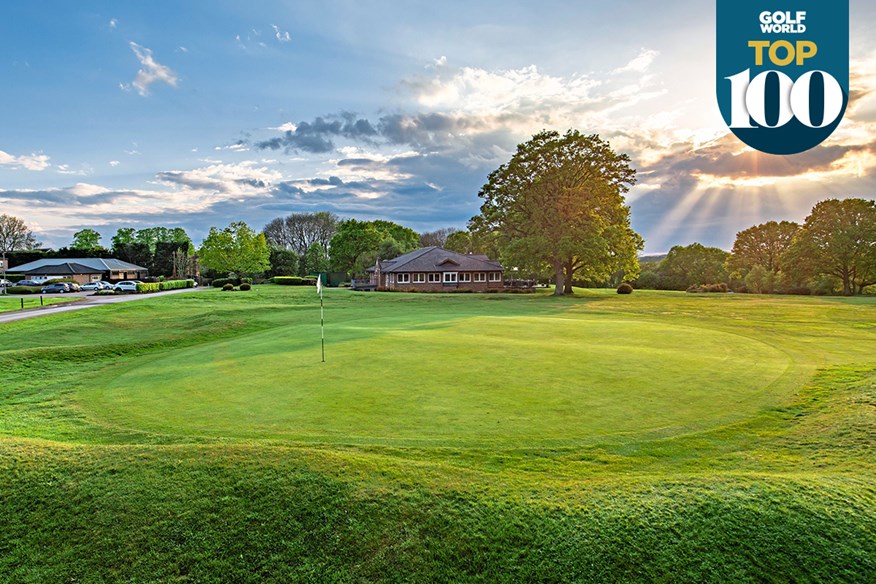
BERKHAMSTED
HERTFORDSHIRE, ENGLAND
Since 2018, Berkhamsted have produced their own bread in-house. This means they have stopped ordering externally-produced bread products, which has in turn reduced the food miles and related carbon emissions.
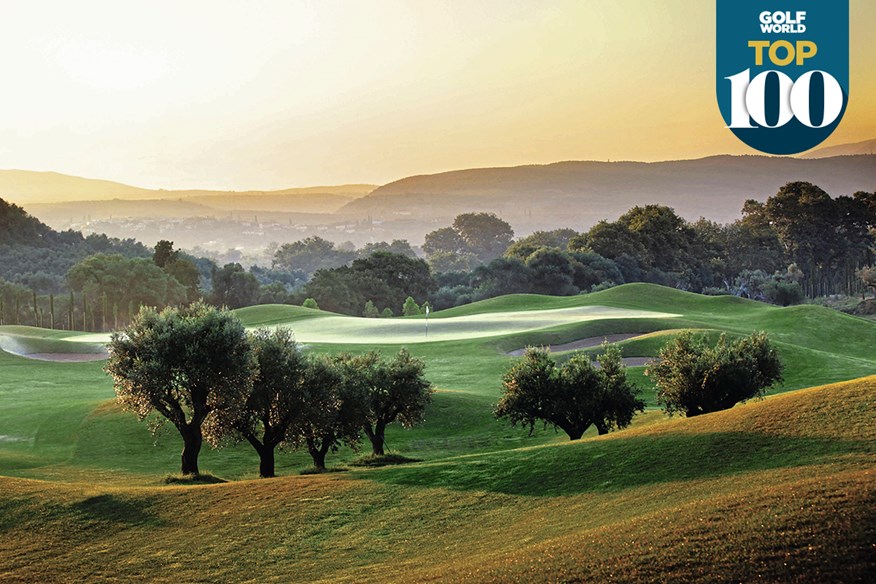
COSTA NAVARINO
KALAMATA, GREECE
Costa Navarino have recently taken significant action to reduce their energy consumption and greenhouse gas emissions by installing the largest geothermal system in Europe. This has replaced the traditional use of gas to heat and cool their buildings. They have also introduced energy-efficient lighting, external wall insulation and energy-efficient windowpanes to reduce energy demand.
COVENTRY
WARWICKSHIRE, ENGLAND
Coventry have been working on reducing their electricity costs by becoming more efficient. The club have invested in solar panels as well as more efficient air conditioning systems and incorporated natural ventilation into their buildings. All these changes have reduced their carbon footprint and costs by 28.5%.
CROMSTRIJEN
ROTTERDAM, NETHERLANDS
Since 2018, Cromstrijen have been using renewable energy generated on-site to power as much of their operations as possible. From 2020, the energy generated from their solar panels has met a third of the club’s energy demand.
DRIENE
ENSCHEDE, NETHERLANDS
When the club identified it had to replace each green due to issues with compaction, they realized it would be a hugely carbon-intense process. Instead, they chose alternative action, using a ‘drill and fill’ procedure that was far less carbon-intensive.
DOMBURGSCHE
DOMBURG, NETHERLANDS
Domburgsche have been using a local flock of sheep to keep their rough in check. This has created a number of benefits, including reducing the amount of Co2 produced as less time is spent on maintenance machinery.
GANTON
YORKSHIRE, ENGLAND
Ganton’s team have created an on-site turf nursery, removing the need to import turf when there are worn or damaged areas on the course. This massively reduces the club’s carbon emissions as no fossil fuels are burned to transport turf to the site.
GARMOUTH & KINGSTON
FALKIRK, SCOTLAND
The club have made their bunkers more naturalized, which has not only improved the look and flow of the course but has also significantly reduced maintenance requirements, saving on fuel and machinery costs, and cutting Co2.
INFINITUM
TARRAGONA, SPAIN
This resort have invested in 533 solar panels, generating more than 267,000kw of energy a year. The energy generated is used to power a water treatment plant on site. This investment saves 71 tons of Co2 each year.
KNOLE PARK
KENT, ENGLAND
Knole Park have renovated practice area bunkers using Ecobunker. This has stabilized the old bunkers and lowered maintenance requirements, reducing carbon emissions during greenkeeping practices and in replenishing sand.
LA PINETINA
MILAN, ITALY
Since 2015, La Pinetina have adopted a ‘less plastic’ policy. Around the clubhouse, products are stored in refillable dispensers. This has helped the club massively reduce the number of single-use plastics.
NATIONAL GOLF TRAINING CENTRE
LISBON, PORTUGAL
NGTC have upgraded the central control system of their irrigation, meaning the course is irrigated in the most efficient way. The system monitors the pump station and ensures it always runs at maximum efficiency, ensuring that there is no waste of energy.
NORTH BERWICK
EAST LOTHIAN, SCOTLAND
Grass clippings are stored and composted on-site, to be used in the divot mix around the course. This process removes the carbon emissions incurred from importing new turf and plays a key role in enhancing the nutrient cycle of existing turf.
PORTMARNOCK
DUBLIN, IRELAND
Portmarnock are moving away from fossil fuels, and now more than a third of their maintenance and golf cart fleets are electric/hybrid. The club also completed the installation of solar panels to power this electric fleet.
ROYAL MID-SURREY
SURREY, ENGLAND
Royal Mid-Surrey have been on a mission to reduce single-use plastic consumption in and around the clubhouse. This has involved wholesale changes in catering practices as well as staff engagement to decide the best route forward. The removal of single-use plastic cups alone has saved the club more than 600kg of C02 equivalent.
SARFVIK
SARFVIK, FINLAND
Sarfvik have replaced all their buggies with fully-electric models and installed a new heating system that can be accurately managed, ensuring the heating and cooling of the clubhouse is as efficient as it can be.
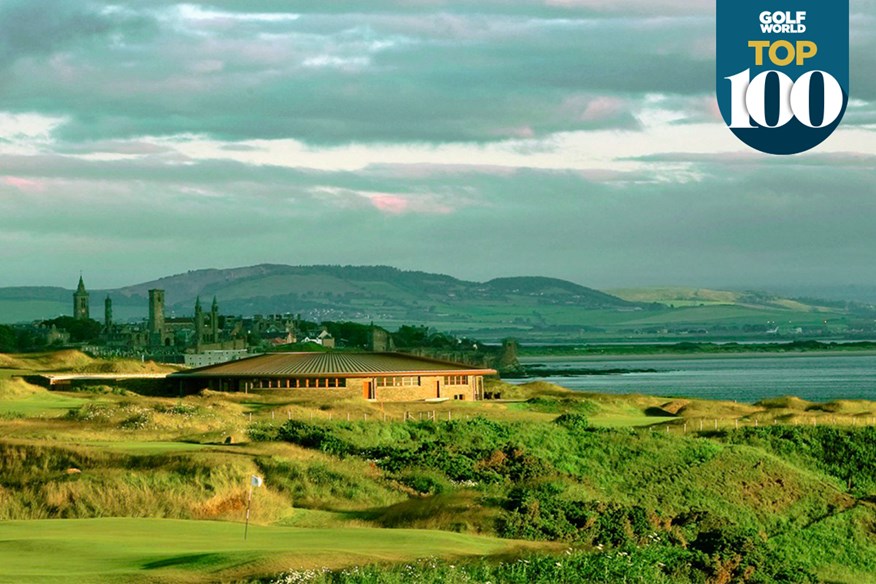
ST ANDREWS LINKS
FIFE, SCOTLAND
St Andrews Links can be commended on how much work they do; sustainability has long been an important aspect of how they operate their seven courses. It is greatly encouraging to see this historic links at the forefront of sustainable action and so involved with the GEO Foundation, having achieved OnCourse certification in each year since 2011.
At the Castle, solar panels have been placed on the roofs of all maintenance buildings, with the energy generated used to charge some of their electric maintenance fleet or sold back to the National Grid. Both actions make huge savings in climate-affecting gasses.
The Castle clubhouse also makes use of geothermal energy to heat the building – another clever way to reduce carbon emissions and reliance on fossil fuels.
Across all the links, pride is taken in how waste is managed, with zero waste going to landfill and as much as possible recycled and reused. The Links Trust no longer accepts polystyrene packaging and all non-recyclable waste is repurposed for energy reclamation.
Every action taken by St Andrews Links comes after careful consideration of how it will impact the environment and the climate, and the least impactful route is always taken.
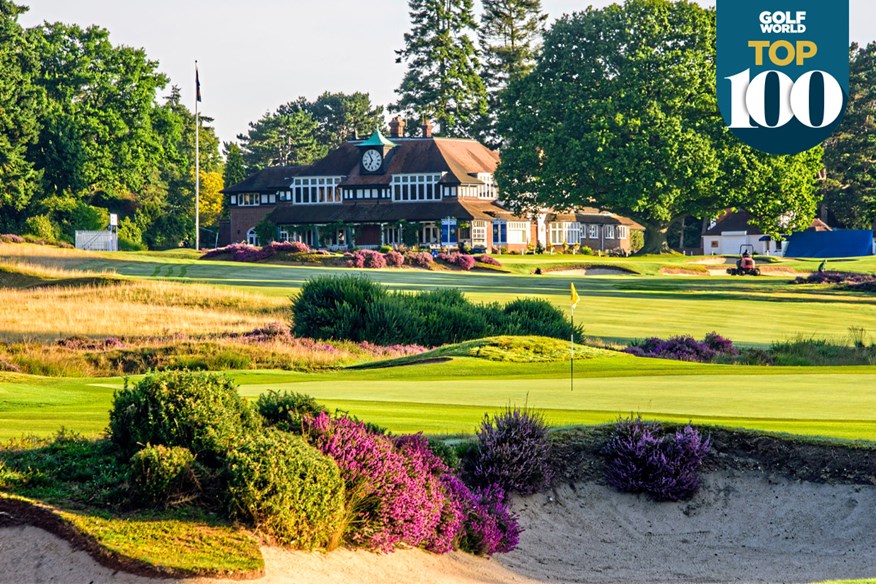
SUNNINGDALE
SURREY, ENGLAND
Sunningdale have spent the last three years carrying out sustainability upgrades to their clubhouse, resulting in less energy, chemical, water and carbon-based fuel use. These upgrades range from simple actions of changing to LED lights, up to more technical decisions on sonar frequency cleaning of beer lines and refrigeration optimization.
THE RENAISSANCE CLUB
EAST LOTHIAN, SCOTLAND
The Renaissance Club have moved away from using unsustainable fensoil and peat (which was driven hundreds of miles to the club) and begun using locally sourced, controlled organic compost for topdressing and a divot mix. This compost has far less carbon associated with it than previously used materials.
WALTON HEATH
SURREY, ENGLAND
Solar panels provide more than enough power to the maintenance facility, allowing it to operate and charge all electric and hybrid machinery. The club also use green energy tariffs to power the clubhouse and other golf buildings, meaning 100% of the energy used here is supplied by renewable sources.
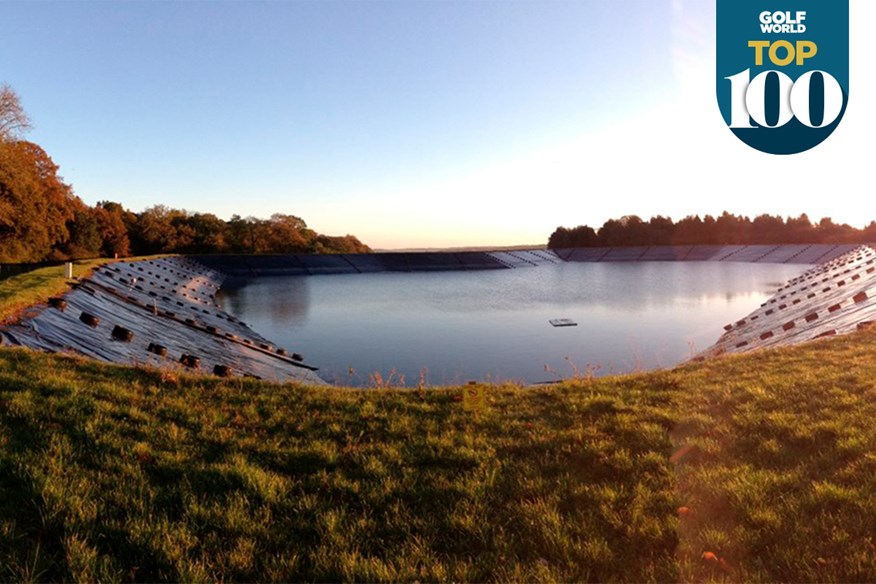
WOBURN
BEDFORDSHIRE, ENGLAND
Woburn have managed to become water self-sufficient by creating a reservoir that collects rainwater and water redirected through drainage, removing the reliance on potable water and energy-intensive extraction methods. To further reduce the club’s carbon footprint, they have changed to LED lights and are trialing electric greens mowers.
ZURICHSEE
ZURICH, SWITZERLAND
Zurichsee operate a responsible purchasing policy which revolves around product cost and carbon footprint. By carrying out bulk purchases, the club have been able to reduce their carbon footprint by minimizing the amount of product travel.
Best Sustainable Golf Courses in Europe: Fostering Nature
From the very beginning of golf on the links of Scotland, golf has always been an integral part of the local nature and landscape. The courses we look at here show a real understanding of this philosophy and have kept nature at the heart of their facilities – giving back to the land that has given us such a perfect space for our sport.
BELVOIR PARK
BELFAST, NORTHERN IRELAND
Situated within a designated Site of Special Scientific Interest, Belvoir work closely with Lagan Valley Regional Park to safeguard the flora and fauna that call the course home. The club also collaborate on structured eco reports.
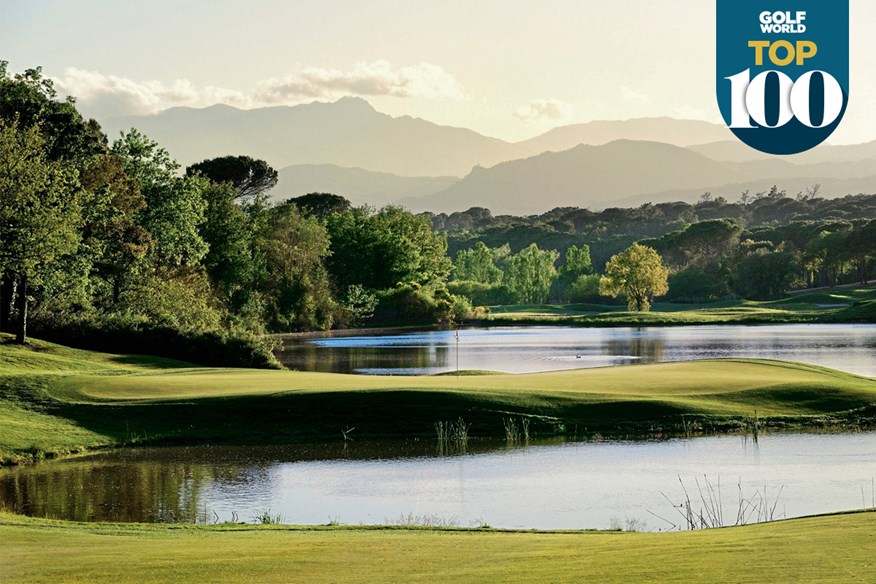
CAMIRAL GOLF & WELLNESS
GIRONA, SPAIN
Camiral Golf & Wellness, formerly known as PGA Catalunya, have created a large aquatic ecosystem that hosts a number of insects and invertebrates. They also encourage bats to the area and use them as a way of maintaining the mosquito population.
DE PALINGBEEK
YPRES, BELGIUM
The club have repurposed materials to create shelter for animals that use the site. A war-era bunker has been transformed into a winter bat house, providing shelter for three species that have been recorded at the club, and old information panels have been turned into a bee hotel.
DUNBAR
EAST LOTHIAN, SCOTLAND
By teaming up with local volunteer groups, Dunbar have been able to remove the invasive tree mallow from the local area. This has allowed native species to repopulate the areas and increase biodiversity.
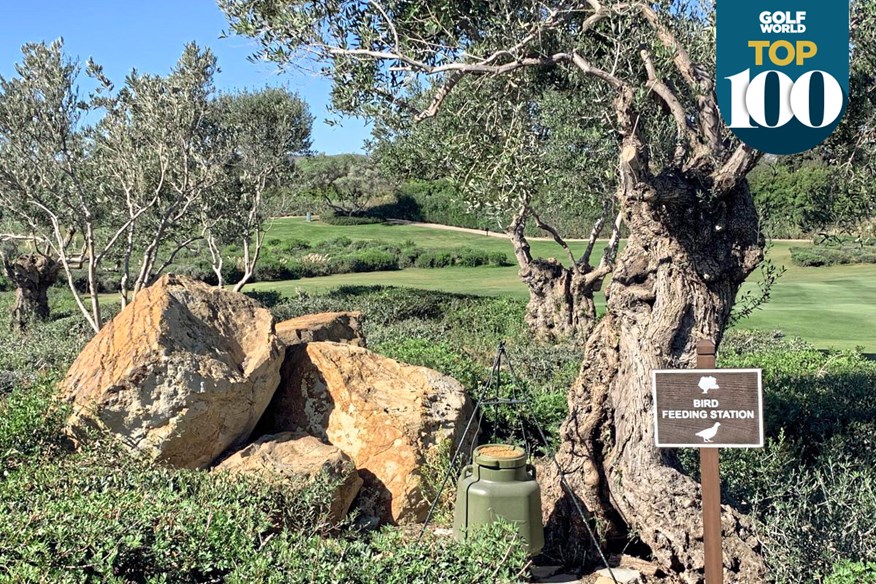
FINCA CORTESIN
MALAGA, SPAIN
Finca have installed a number of feeding stations designed for birds of all sizes. The resort’s location makes it a vital resting place for migratory birds and the feeding stations make their journey easier.
GOODWOOD
SUSSEX, ENGLAND
On the Downs course, the club have changed rough areas to create a stronger, more diverse habitat. What was mostly thick ryegrass five years ago is now a tapestry of wildflowers and fine grasses, attracting more wildlife to the area.
GULLANE
EAST LOTHIAN, SCOTLAND
At Gullane No.1, an area of rough grassland was dug out to the level of the water table. After shaping the pond, marram and fescue grasses were planted along the bank. This was then left to naturally develop into a biodiverse habitat.
KINGSBARNS
FIFE, SCOTLAND
Working with the Royal Society for the Protection of Birds to protect the population of corn buntings, Kingsbarns are carrying out habitat management techniques as well as providing special seed mixes recommended by the RSPB.
LA FINCA
TORREVIEJA, SPAIN
Around 8.5 hectares of La Finca’s course have been returned to their native habitats. This has reduced the area of intensively managed turf grass while increasing the available habitat for native fauna species.
LIEMEER
NIEUWVEEN, NETHERLANDS
Liemeer have recognized the importance of birds to the course’s maintenance as a way of pest management. Banning the use of pesticides and crop protection has seen an annual increase in visiting bird species.
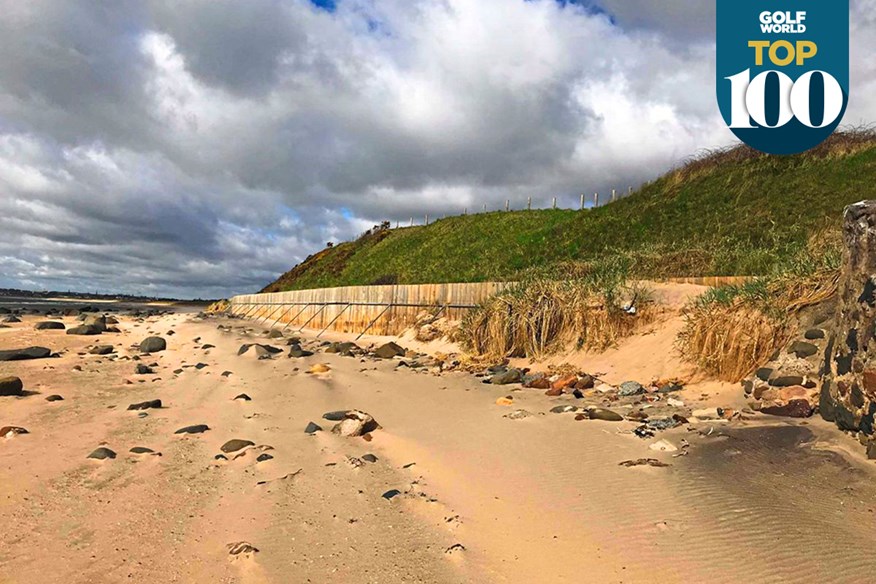
LUNDIN
FIFE, SCOTLAND
There is a strong relationship between Lundin and the nature that surrounds it. The club have used reclaimed railway sleepers to protect dunes that were under threat from coastal erosion. There has been a natural regeneration of grasses along these defences, and they are now thriving.
A cut-and-collect program has been implemented, with what was previously unkept scrub being returned to more natural wildlife corridors connecting the course to the wider environment. There are a number of areas set aside that are left to naturally grow.
In a further attempt to have a positive impact on the natural environment, the club spend time maintaining and conserving their core woodland habitats. Deadwood, branches and leaf litter are left to encourage the hibernation of hedgehogs.
Lundin is an excellent example of how clubs can respect the land that has given it life and they do this work with pride.
MACHRIHANISH DUNES
ARGYLL, SCOTLAND
Mach Dunes has been nicknamed ‘The most natural club in the world’ and it is easy to see why. No irrigation or chemicals are used on the fairways, allowing them to grow as nature intended, and sheep are used in the off-season to maintain the fescue grasses.
NORTHAMPTONSHIRE COUNTY
NORTHANTS, ENGLAND
Over the years the landscape here has become dominated by woodland, resulting in a loss in the natural heathland habitat. The creation of a Tree and Woodland Management Plan is benefitting the heathland and the mosaic of habitats is great for biodiversity.
PORTSTEWART
COLERAINE, NORTHERN IRELAND
Each year at Portstewart, before the start of the sand martin nesting season in March, the team ensure sand banks at a part of the course are made accessible for nesting birds and safe from potential predators. These sand martins have become an important part of the course.
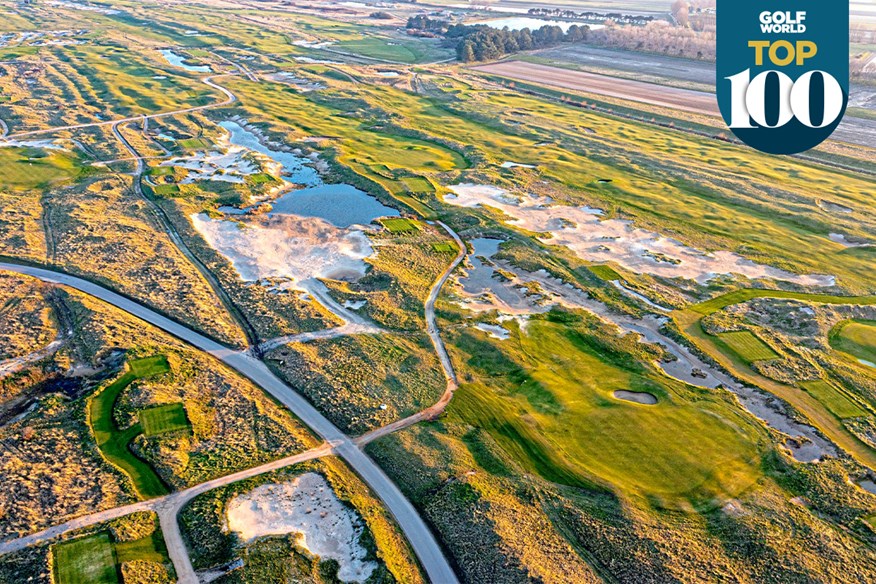
PRINCE’S
KENT, ENGLAND
The course at Prince’s sits within a Ramsar site – a wetland of international importance – and is recognized for the numerous rare and protected species that call it home. Continual work is carried out with external stakeholders to ensure the course contributes positively to this designated site.
ROYAL COUNTY DOWN
NEWCASTLE, NORTHERN IRELAND
RCD prioritize biodiversity when it comes to their bunkers, allowing them to have rough, natural edges. This is a key part of the club’s Biodiversity Management Plan and mining bees and marsh fritillary butterflies are just some of the species that benefit.
ROYAL DUBLIN
DUBLIN, IRELAND
Royal Dublin have introduced beehives around the course in an effort to re-establish the Irish black honeybee. The introduction of bees to the area has provided great benefits in biodiversity as these pollinators thrive.
ROYAL PORTHCAWL
PORTHCAWL, WALES
The greens team have improved existing ponds on site by removing encroaching willows and reeds and re-profiling the ponds themselves. This has created and restored habitats for the great crested newt, a European Protected Species.
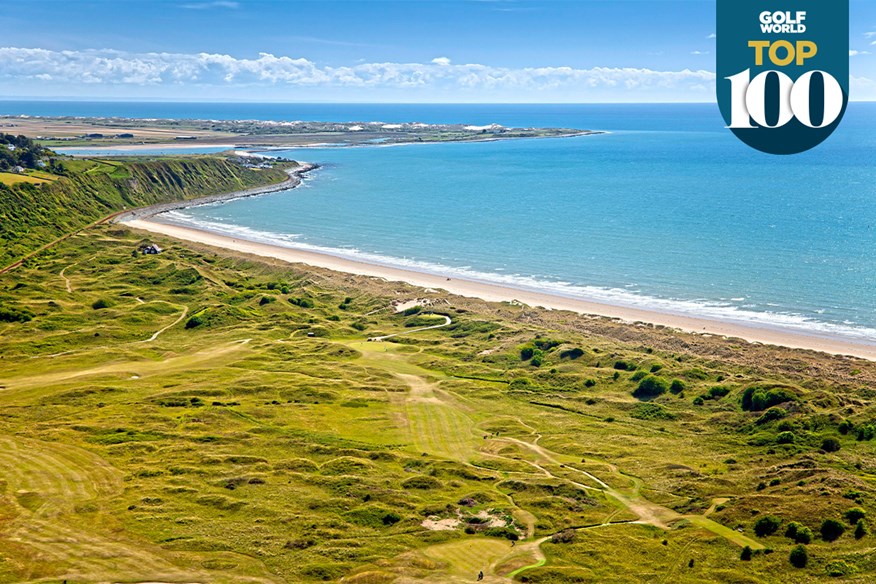
ROYAL ST DAVID’S
HARLECH, WALES
Royal St David’s carefully manage gorse and scrub to leave clean sand exposed around the course. This benefits native birds, lizards, bees and wasps, as well as allowing sensitive plant species to re-colonize the area.
SAUNTON
DEVON, ENGLAND
For many years Saunton has actively managed their dune slack habitat, which has helped these landscape features attract a great deal of wildlife. These dune slacks provide valuable shelter for resting birds and often become highly biodiverse habitats.
ST ENODOC
CORNWALL, ENGLAND
A detailed ecological habitat survey was carried out at St Enodoc that has allowed for efficient planning and management of its habitats. The club have also invested significantly in protecting a rock dune Site of Special Scientific Interest on the property.
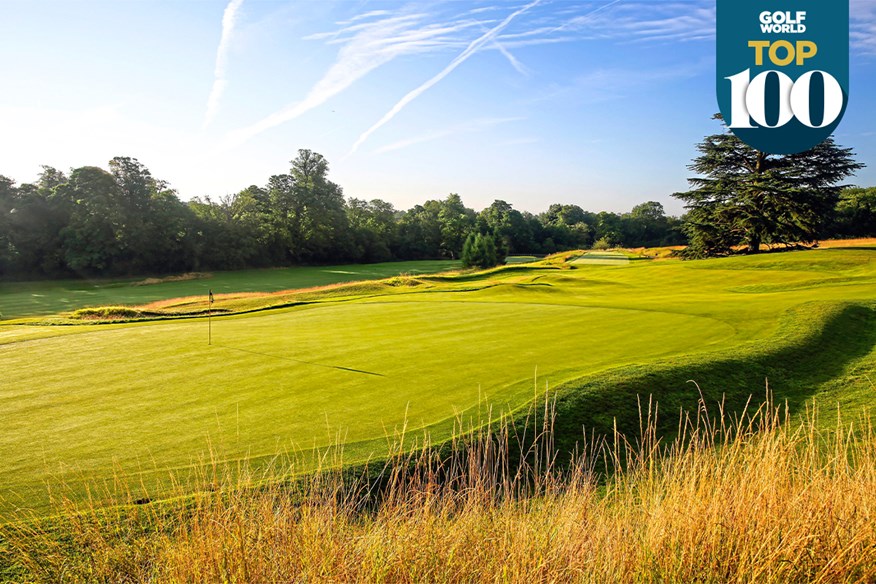
THE GROVE
HERTFORDSHIRE, ENGLAND
The Grove have dedicated 1.5 hectares to wildflower establishment, using a mix of flowers that are well suited to the area’s chalky sub-soil. This has seen an annual rise of honey and mason bees across the resort, having a positive effect on pollination in the area.
THE ISLAND
DUBLIN, IRELAND
The relocation of The Island’s car park presented the opportunity to create a new habitat. In line with the club’s ecological plan, all materials were stripped back to bare sand and islands of marram slabs planted to reduce sand blow. Over time, wildlife and pollinators have returned to the area.
WEST KILBRIDE
AYRSHIRE, SCOTLAND
Working with the course architect, West Kilbride have increased the area of long, rough grassland. This has seen an increase in voles, shrews and mice, leading to a rise in the number of predator species such as owls, hedgehogs and badgers.
WOODHALL SPA
LINCOLNSHIRE, ENGLAND
Woodhall Spa have managed the gorse and sapling growth that had become invasive on the native heathland. Removing these has allowed that heathland to re-establish and flourish. This has also caused an increase in mosses and lichens that are in decline across the region.
Best Sustainable Golf Courses in Europe: Conserving Resources
Maintenance itself can be fairly resource intensive, but it doesn’t always have to be. By having a full and comprehensive understanding of the land the course sits on and the materials involved – principally turf, soils and water – as well as making sure they are well-suited to the local climate, huge savings on resource use can be made. This is not only a positive for the environment, but also a financial saving for the club.
BALLYLIFFIN
DONEGAL, IRELAND
Ballyliffin prioritise the use of local materials. Sand from within the property is used for topdressing and a locally-sourced liquid seaweed fertilizer is used on the greens. By using these products they ensure no non-native weeds or diseases are brought onto the site – and cut their CO2 footprint.
BOGOGNO
MILAN, ITALY
Bogogno has implemented a Sustainable Energy Policy, which has seen them install solar panels, create several electric vehicle charging points and start to move their maintenance fleet to hybrid. The purchase of three hybrid mowers has saved 6,000 litres of diesel a year.
CASTELFALFI
SIENA, ITALY
While restoring the buildings on the property, Castelfalfi used materials with a high degree of thermal insulation to ensure minimal heat exchange. The on-site biomass power plant provides thermal energy for heating and cooling the buildings.
CAPELLE
ROTTERDAM, NETHERLANDS
Capelle added 40 solar panels to the roof of its buggy shed. The energy it has created is helping the club save 10,070kw each year. The club have also reduced the annual meadow grass in seed mixes, which in turn has cut the amount of pesticides required.
DELLA MONTECCHIA
PADUA, ITALY
The club introduced an initiative to maximize opportunities to reduce, reuse and recycle, giving new life to materials that would otherwise go to landfill. To date, they have produced 42 putting green flags, a food service cart and office furniture.
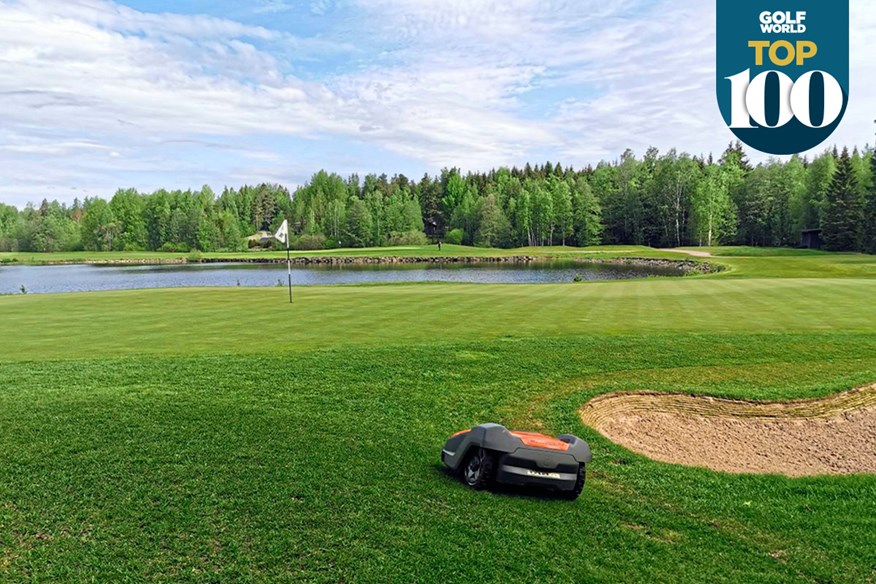
HIRSALA
KIRKKONUMMI, FINLAND
Hirsala have worked alongside GEO Foundation for a number of years, having been certified since 2010, and the club continues to impress with their actions.
In 2021, they swapped all the diesel and heating oil used in golf course maintenance machinery to Neste MY Renewable Diesel and Neste MY renewable heating oil.
Neste MY Diesel is a Finnish innovation made from 100% waste. The reduction in the course maintenance machinery’s carbon footprint is 90% on average.
By introducing energy-efficient robotic mowers to the club, more time has been made available for the greens team to work on other sustainability projects. It has also carried out a full irrigation audit, which resulted in a reduced irrigation window – a change that has halved water usage at the club.
HORSHOLM
COPENHAGEN, DENMARK
Horsholm have systematically phased out its old turf species for a more resilient and well-suited alternative. This has helped reduce the amount of fertilizer, pesticide, water and management required and has extended the club’s golf season.
KILMARNOCK (BARASSIE)
TROON, SCOTLAND
In 2021, Kilmarnock constructed a new 13th hole without importing any turf grass. All turf (approximately 11,000 rolls) was taken from an old green site and the practice area. This approach allowed the native grasses on the site to be used.
LA MOYE
JERSEY, CHANNEL ISLANDS
La Moye provided reusable water bottles to staff, volunteers and competitors at the Jersey Legends Tour event. This, as well as the introduction of a water-refilling station, was part of their commitment to reduce waste.
DES ILES BORROMEES
BRISSOGNE, ITALY
Des Iles is run on certified green energy; all traditional lighting fixtures have been replaced by LED lighting which has a much lower energy demand. The also club fitted solar panels to the clubhouse roof, and the energy created is used to heat the outdoor swimming pool.
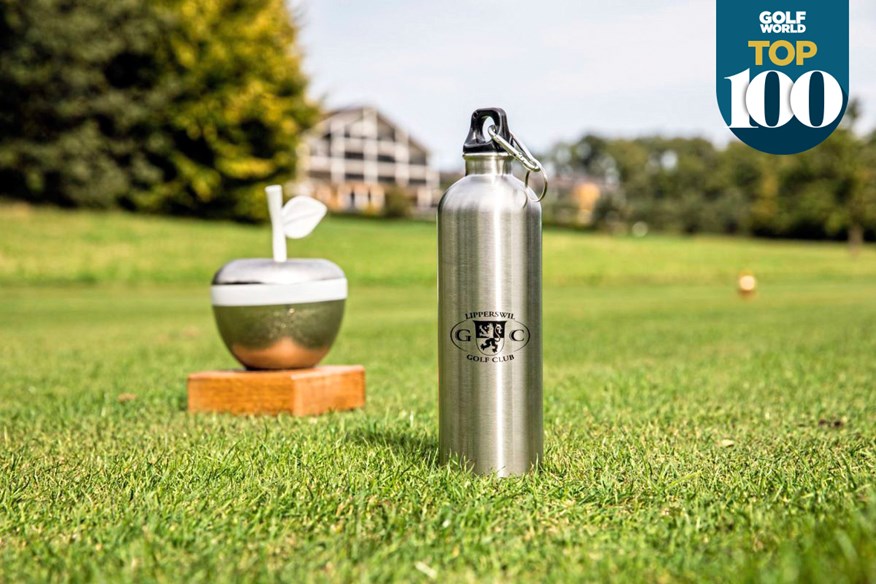
LIPPERSWIL AG
WALDI, SWITZERLAND
The club have provided refillable bottles and coffee mugs to staff in order to eliminate single-use plastic. They have also transitioned from using paper scorecards and now use virtual cards on members’ phones. This has saved approximately 6,000 sheets of paper a year.
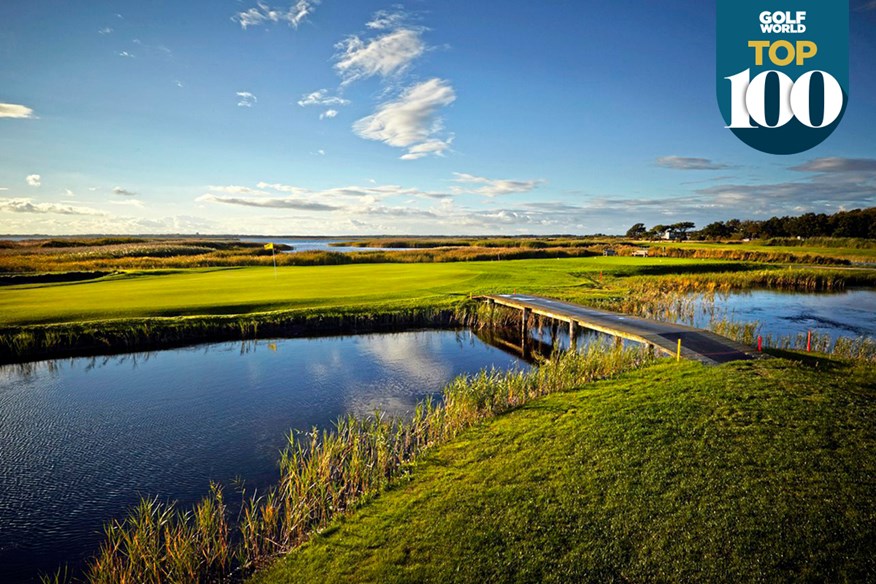
LJUNGHUSENS
MALMO, SWEDEN
Ljunghusens have started to compress the club’s waste, allowing for much more to be stored at the club before collection is required. This has seen the cardboard collection reduced to only four times a year and resulted in a huge saving.
LUFFENHAM HEATH
RUTLAND, ENGLAND
The club invested in a biomass heating system which runs on woodchip. This provides enough energy to heat the clubhouse, pro shop and two greenkeepers’ cottages, and the club expect to see a return on its investment within 20 years.
MJOLBY
MJOLBY, SWEDEN
By fully renewing and upgrading their irrigation system, Mjolby have managed to make their process far more efficient. The club has removed irrigation from the fairways and each sprinkler head is now individually controllable.
PYLE & KENFIG
BRIDGEND, WALES
The club purchased a sand screen that removes stone and other large materials from sand. This has allowed them to make use of the native sands adjacent to the course. This sand is now used for topdressing and to fill bunkers.
ROTHES
ELGIN, SCOTLAND
Rothes collect rainwater from the maintenance facility roof which is then stored and used for liquid feed and seaweed applications as well as for washing tools. This saves on the mains water that was previously required for these tasks.
ROYAL ABERDEEN
ABERDEEN, SCOTLAND
Royal Aberdeen purchased a mixing tank that allows them to mix their own nutrient treatments for all areas of the course. This means they no longer have to buy pre-made mixes and can tailor each treatment to what is required, minimizing waste and maximizing effectiveness.
ROYAL BIRKDALE
SOUTHPORT, ENGLAND
At Royal Birkdale they have been able to reduce irrigation water usage by around 35% as they have stopped irrigating rough areas and now only irrigate intensely managed turf. The new system saves water, energy and costs.
ROYAL CINQUE PORTS
DEAL, ENGLAND
As part of an initiative to promote sustainable energy use, the club operate electric buggies for golfers and the greens team. They are also in the process of changing all light fittings to be LED while promoting efficient energy use.
ROYAL DORNOCH
HIGHLANDS, SCOTLAND
When building a new maintenance facility, the aggregate spoil from the old one was crushed and used as base material and leveling while wood and tin was recycled locally. The new facility absorbs and stores heat while the solar panels create enough energy for the lighting, to heat the water and run the air-to-air heat pump.
ROYAL ST GEORGE’S
KENT, ENGLAND
When undertaking their annual bunker maintenance program, RSG’s team only use turf from the on-site nursery and sand from the open dune area on the site. This makes the whole process inclusive and does not require excess or external materials.
TROIA
LISBON, PORTUGAL
Troia removed the semi-rough at holes that connect to the natural dunes. This reduces the maintenance requirements as everything is cut to one height. It has also reduced the amount of herbicide required.
TRUMP TURNBERRY
AYRSHIRE, SCOTLAND
Across the courses at Turnberry, the team have returned the majority (120 of 200) of the bunkers back to naturalized rather than revetted. This has saved countless hours of maintenance and resources to maintain them.
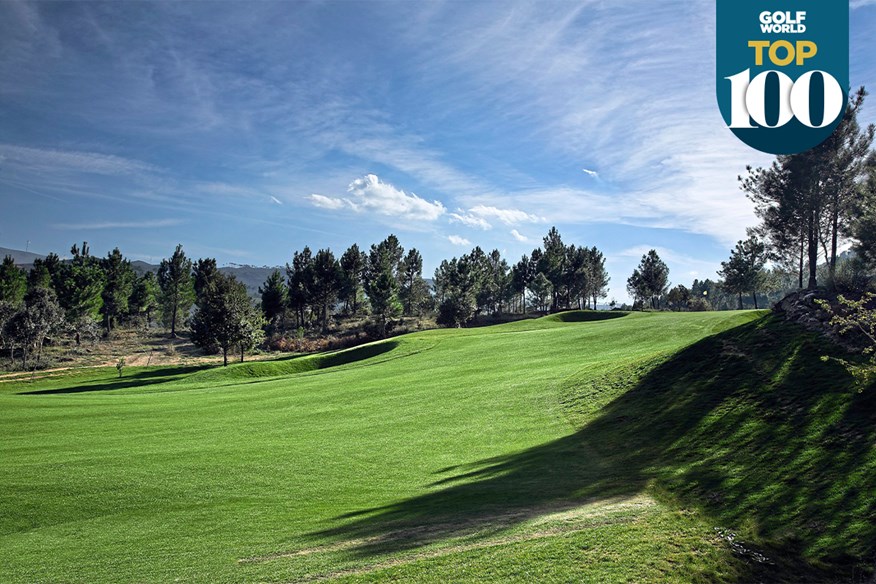
VIDAGO PALACE
PORTO, PORTUGAL
Over the past three years, there has been a reduction of around 20 percent in energy consumption at Vidago Palace due to the club’s focus on solar thermal energy for heating water and the upgrading to a more efficient irrigation system.
Best Sustainable Golf Courses in Europe: Strengthening Communities
Golf is a social sport and the golf club can be an integral part of the local community. As such, it is important clubs give back to the community in whatever way they can. Whether it is creating ways of introducing the next generation of stars to the sport, supporting charities or running education classes for local people, all these clubs have recognized the importance of their local community and have taken action to give back as much as they can.
APHRODITE HILLS
PAPHOS, CYPRUS
At Aphrodite Hills, helping others is a key part of what the club do. There is an in-built desire to give back to the community and have a positive impact on those around them. In 2017 the resort created the ‘For the Love of Life’ Foundation, with the goal to alleviate poverty and suffering of people, with an emphasis on quality of life. The resort have hosted a number of social and cultural events, raising money as well as donating to various non-profit organizations through the foundation.
This charitable arm extends to annual support for Animal Rescue Cyprus, Ukrainian refugees and more than €24,000 for the ‘One Dream One Wish’ (Make a Wish) foundation.
ASHBURNHAM
BURRY PORT, WALES
Ashburnham raise awareness on topics of sustainability among their membership by creating posters that detail the club’s sustainability mission, goals and initiatives. This approach everyone at the club informed and engaged.
BANCHORY
ABERDEEN, SCOTLAND
Banchory work with a local nursery and together have created the ‘Bee Club’. This gets kids out on the course, helps spread wildflower seeds and teaches the importance of bees and pollination, bringing the community closer to the golf club.
BROEKPOLDER
ROTTERDAM, NETHERLANDS
The club have labeled over 70 trees around their golf course as a way of connecting their membership to it and its landscape. They also seek to educate members on what wildlife can be seen during a round.
BURNHAM & BERROW
SOMERSET, ENGLAND
The golf club have begun working with ‘The Friends of Berrow Beach’ during their monthly beach clean-ups. Providing a way of getting the waste from the beach to the collection point has made the process more efficient and demonstrated the club’s community support.
CARNOUSTIE
ANGUS, SCOTLAND
Carnoustie have made great strides in the promotion and expansion of the women’s game. Being part of the R&A’s Women in Golf Charter, the club are working on new projects that will provide more opportunities to women in golf.
DU RHIN
MULHOUSE, FRANCE
Every year, Golf du Rhin host a ‘hand-weeding awareness day’, giving the maintenance and greenkeeping teams the opportunity to speak with members and educate them on the work being carried out on the course and the associated benefits and constraints.
DUNDONALD LINKS
AYRSHIRE, SCOTLAND
Dundonald have created the ‘Links to Golf’ program, working to the Scottish government’s Curriculum for Excellence by providing outdoor classrooms that are used by around 700 students every year.
ELMWOOD
FIFE, SCOTLAND
This facility was built with the purpose of training greenkeepers to the highest standard. Over the years training has broadened and recently seen environmental aspects added, with the trainers becoming Lantra-accredited.
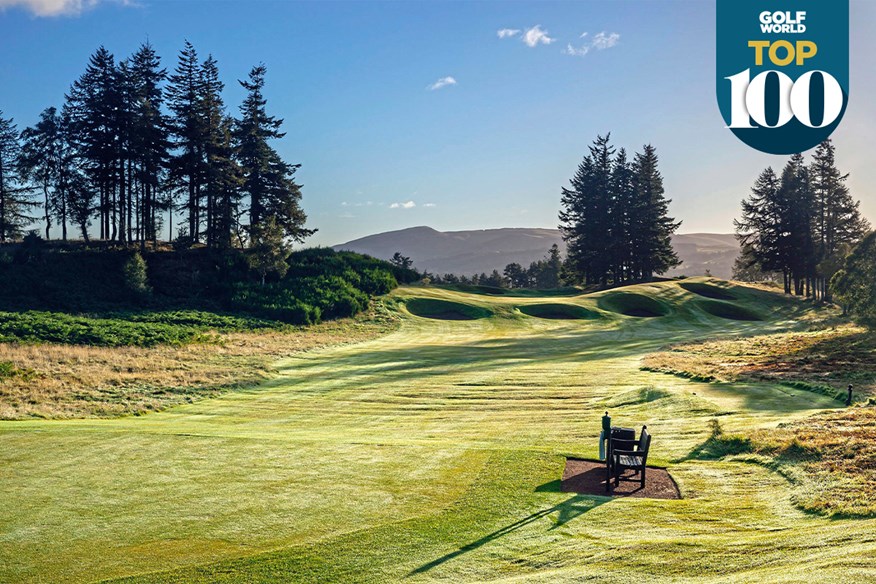
GLENEAGLES
PERTHSHIRE, SCOTLAND
Giving back to the community and those that support the club is important to all at Gleneagles. A Wellbeing Library has been created, containing videos, podcasts, articles and training sessions which can be used to support mental well-being.
The resort also support and provides space for Andy’s Man Club to host meetings, providing a safe space for men in the area to come together and talk about their mental health.
Gleneagles are also proud to celebrate women in golf throughout their business; women make up 50 percent of the workforce, ranging from career entry-level roles right up to the executive committee. Actions such as this keep driving golf forward, creating a fair and equitable industry.
GRANGE
DUBLIN, IRELAND
Charitable efforts from the club and the Captains’ Charity Initiative have seen more than €10,000 raised for homeless charities in Dublin as well as over €20,000 raised and donated to Cancer Support as they play their part in the local community.
LE GOLF NATIONAL
PARIS, FRANCE
The 2018 Ryder Cup host regularly collaborates with a number of organizations to benefit the club and community – such as its partnership with Museum National D’Histoire Naturelle, to record an inventory of species around the course.
MACHYNYS PENINSULA
LLANELLI, WALES
The club have raised money for and donated to a number of local charities over the years, including a local hospice and the Wales Air Ambulance service.
MINTHIS
PAPHOS, CYPRUS
In the summer months, Minthis work with the Paphos community and local sports clubs to offer an introduction to golf from PGA professionals. This program has helped grow the sport and introduce it to a new generation.
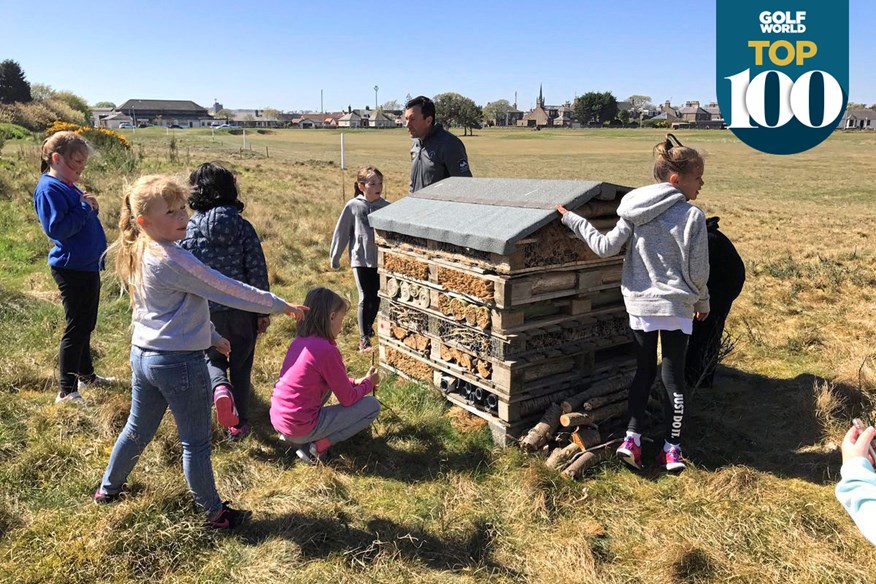
MONTROSE
ANGUS, SCOTLAND
Montrose provide a ‘Golf Trail’ education program to primary school pupils in the local area. They also team up with those children to teach them how to make bug hotels and plant trees, letting them help with projects around the course.
OCKENBURGH
THE HAGUE, NETHERLANDS
Ockenburgh helped host the Special Olympic National Games, making sure the course was fully accessible for people of all abilities. The themes of inclusivity run through the club, as locals help with small maintenance jobs weekly, providing a social and educational outlet for people.
OSLO
OSLO, NORWAY
In the winter months, the club lend their driving range to a local bandy club to create a court while the range is frozen over. This court is open for public use and local schools use it on a regular basis. This sort of partnership bonds the local community.
PANNAL
YORKSHIRE, ENGLAND
A group of volunteers help the greens team at Pannal to keep the course presentable and functioning smoothly. Over the past 12 months, this community involvement has been integral to the management of gorse.
PGA NATIONAL CZECH REP
PRAGUE, CZECH REPUBLIC
When cutting rough areas, greenkeepers collect lost golf balls and bag them up. These balls are then gifted to new golfers being introduced to the sport during juniors’ camps.
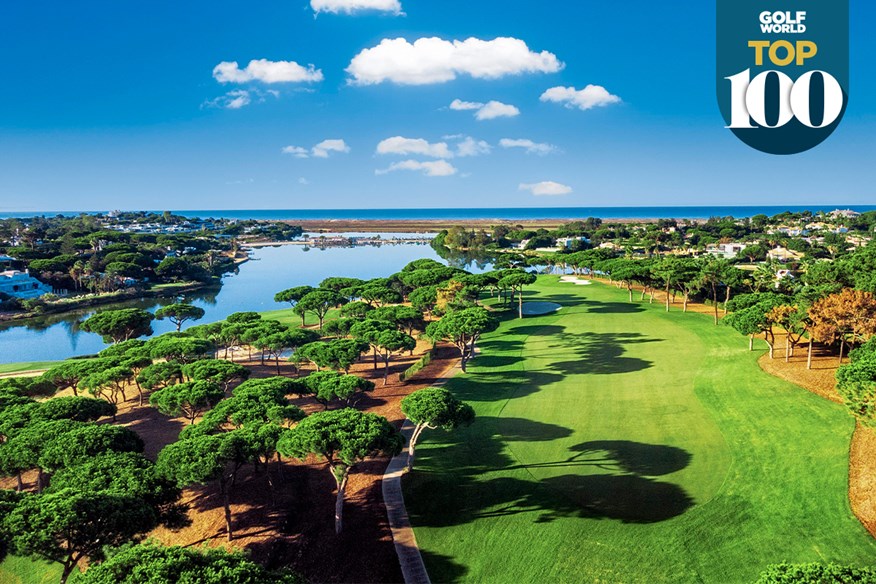
QUINTA DO LAGO
FARO, PORTUGAL
Working alongside local partners Infraquinta, the Quinta do Lago team clean up the footpaths around the nature trails and beach. This raises awareness on waste reduction, reuse and recycling, with the aim being to leave no trace of human activity.
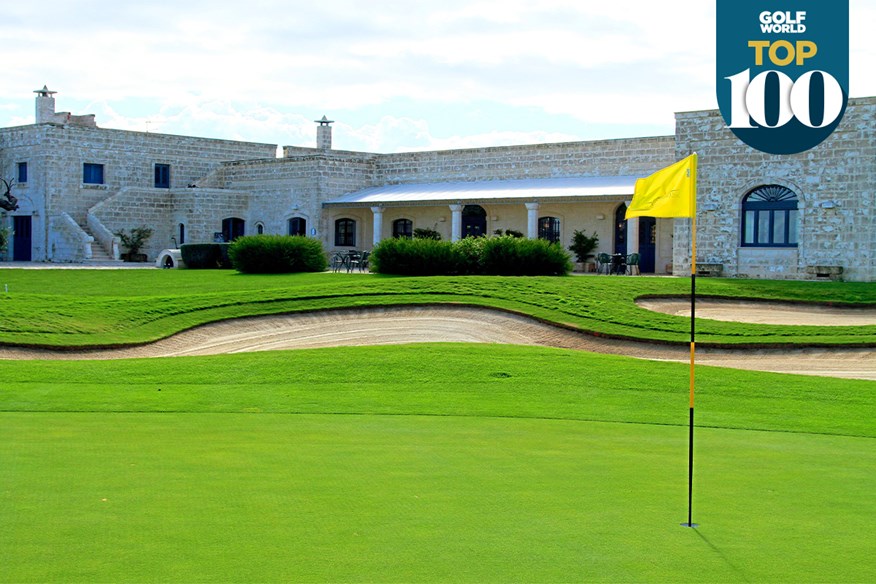
SAN DOMENICO
BARI, ITALY
The team at San Domenico have ensured the club is truly multi-functional and has activities available for non-golfers – including cooking classes, jogging and bike trails and three beaches accessible to families.
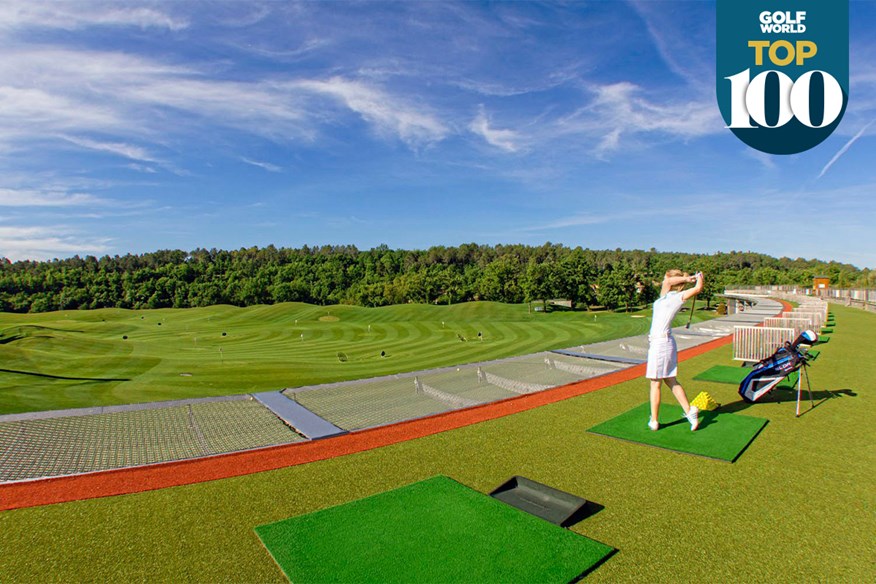
TERRE BLANCHE
TOURRETTES, FRANCE
Terre Blanche provide free golf lessons to children in the surrounding area, introducing more than 400 children a year to the sport. The club have also begun to hold biodiversity awareness sessions for members of the golf school and even involve them in activities such as bird box building, which are then used around the course.
THE INTERNATIONAL
AMSTERDAM, NETHERLANDS
The team at The International pride itself on being a club ready to support its community. They are regularly trained in matters of health & safety and their in-house emergency response team make the club safe and accessible for everyone in the community.
UPSALA
UPSALA, SWEDEN
Upsala have gone to great efforts to preserve features of cultural heritage around the club; an Iron Age grave site dating back to 500BC has been preserved, allowing people to visit, pay their respects and learn about the history of the people.
VADSTENA
LINKOPING, SWEDEN
The club have struck up a partnership with local farmers, allowing them to come in and mow high rough when it needs to be cut. In return, the farmer keeps all the cuttings which are used to feed their animals. This generates around 100 pallets of grass for feed.
-
 We highlight the top 100 golf courses doing their bit for the environment and/or community
We highlight the top 100 golf courses doing their bit for the environment and/or community
-
 Berkhamsted Golf Club is working hard to combat climate change
Berkhamsted Golf Club is working hard to combat climate change
-
 Camiral is one of the best golf resorts in the world
Camiral is one of the best golf resorts in the world
-
 Costa Navarino is one of the world's best golf resorts
Costa Navarino is one of the world's best golf resorts
-
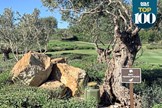 Finca Cortesin bird-feeding station
Finca Cortesin bird-feeding station
-
 Gleneagles is one of the best golf resorts in the world
Gleneagles is one of the best golf resorts in the world
-
 Energy-efficient robot mowers are part of what makes Hirsala one of the most eco-friendly golf clubs in Europe
Energy-efficient robot mowers are part of what makes Hirsala one of the most eco-friendly golf clubs in Europe
-
 Lipperswil are ditching single-use plastics to be more eco-friendly
Lipperswil are ditching single-use plastics to be more eco-friendly
-
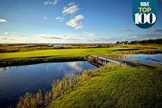 Ljunghusens is one of the most sustainable golf clubs in Europe
Ljunghusens is one of the most sustainable golf clubs in Europe
-
 Lundin Links used old railway sleepers to build a coastal defence
Lundin Links used old railway sleepers to build a coastal defence
-
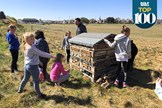 Montrose are encouraging kids to interact with the golf club
Montrose are encouraging kids to interact with the golf club
-
 Princes is one of the most sustainable golf clubs in Europe
Princes is one of the most sustainable golf clubs in Europe
-
 Quinta do Lago is one of the world's best golf resorts
Quinta do Lago is one of the world's best golf resorts
-
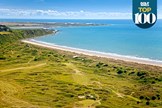 Royal St Davids is encouraging nature to thrive
Royal St Davids is encouraging nature to thrive
-
 San Domenico has a lot to offer beyond just golf
San Domenico has a lot to offer beyond just golf
-
 Solar panels generate energy at St Andrews Castle
Solar panels generate energy at St Andrews Castle
-
 Sunningdale has made its clubhouse far more eco-friendly
Sunningdale has made its clubhouse far more eco-friendly
-
 We highlight Europe's top 100 sustainable golf courses
We highlight Europe's top 100 sustainable golf courses
-
 Terre Blanche is working hard to get children into golf
Terre Blanche is working hard to get children into golf
-
 The Grove is one of the most eco-friendly golf resorts in the world
The Grove is one of the most eco-friendly golf resorts in the world
-
 Vidago Palace is one of the most sustainable golf clubs in Europe
Vidago Palace is one of the most sustainable golf clubs in Europe
-
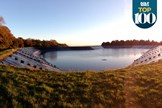 Woburn Golf Club has built its own reservoir to help combat climate change
Woburn Golf Club has built its own reservoir to help combat climate change
